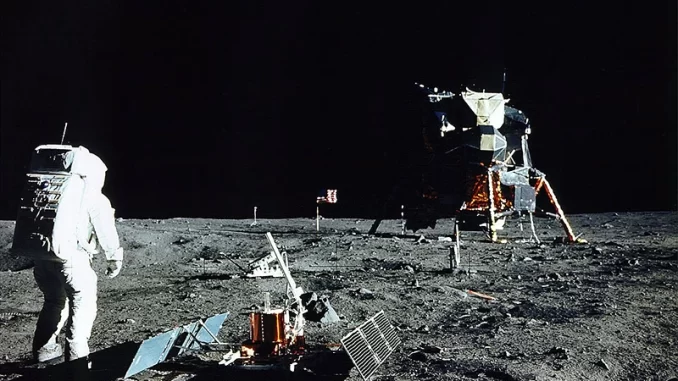

OAN’s James Meyers
11:04 AM – Wednesday, October 25, 2023
A stunning analysis of lunar dirt brought back by the final Apollo mission in 1972 has confirmed that the moon is 4.46 billion years old, which is 40 million years older than experts originally thought.
Advertisement
According to researchers from the Field Museum of Chicago, the moon began as a giant shard of a Mars-sized object that collided with Earth, and never left our orbit.
“These crystals are the oldest known solids that formed after the giant impact,” said senior study author Philipp Heck. “And because we know how old these crystals are, they serve as an anchor for the lunar chronology.”
The Apollo 17 samples indicated that when the object rammed into Earth, it inadvertently formed our moon, molten energy behind the collision melted the rock, forming a dusty lunar surface.
“When the surface was molten like that … any crystals on the moon’s surface must have formed after this lunar magma ocean cooled,” Heck explained. “Otherwise, they would have been melted and their chemical signatures would be erased.”
Scientists studied speckles of a mineral called “zircon,” which is present in moon samples brought to earth in 1972 by the final Apollo mission. It was originally formed when the moon’s impact-driven molten surface was established after the collision that led to its birth.
Additionally, scientists believe zircon crystals are the first solids to have crystallized after the moon’s formation, which allowed them to conclude the moon’s age.
“Because we know how old these crystals are, they serve as an anchor for the lunar chronology,” said Heck.
“Radiometric dating works similarly by counting the number of parent atoms and the number of daughter atoms they have transformed to. The passage of time can then be calculated because the transformation rate is known.”
Furthermore, the samples concluded that the moon’s minimum age to be 4.46 billion years, according to Heck.
Stay informed! Receive breaking news blasts directly to your inbox for free. Subscribe here. https://www.oann.com/alerts
Advertisement

